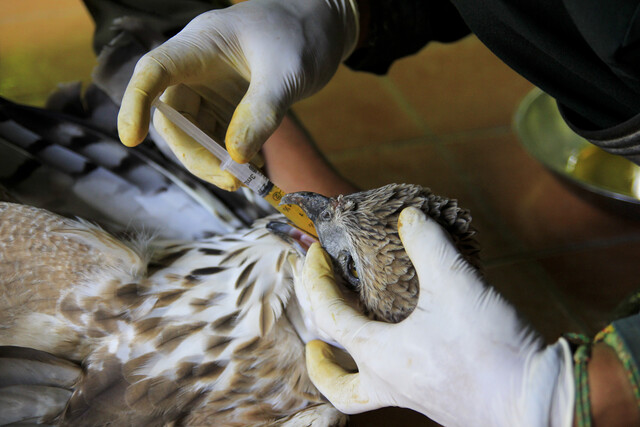Online Class: Aquariums for Fish

-
10Lessons
-
27Exams &
Assignments -
2Hours
average time -
0.2CEUs
Course Description
Aquariums, beyond being mesmerizing visual spectacles, can be tranquil oases, seamlessly integrating the rhythm of aquatic life into our often hectic urban lives. Especially for those nestled in compact spaces or in dwellings where traditional pets are a challenge, aquariums offer a breathtaking and low-maintenance alternative. Yet, starting this journey demands more than just a simple dive; it's about navigating the intricate balance of aquatic ecosystems.
Enter the world of aquarium mastery with this course. Designed meticulously, it equips you with the tools and knowledge to cultivate a thriving underwater sanctuary, ensuring it not only flourishes but also becomes a source of boundless joy and learning for you and your loved ones.
Here's why "Aquatic Elegance" is an unmissable course:
-
Informed Decisions: Understand the nuances between saltwater and freshwater environments. Discover which aligns with your passion, budget, and commitment level.
-
From Novice to Expert: Navigate the initial stages of setting up your tank with ease. From selecting the right equipment to understanding water chemistry, this course sets a strong foundation.
-
Fish Fundamentals: With a myriad of fish species available, making the right choice can be daunting. We simplify this by offering insights into temperament, care needs, and compatibility.
-
Budgeting Brilliance: Get practical advice on effectively managing your investment-be it time or money. Aquariums can be tailored to fit various lifestyles without compromising on their charm.
-
Holistic Approach: Beyond just fish, delve into the world of aquatic plants, decorations, and themes to enhance the aesthetic and ecological value of your tank.
-
Family Fun and Learning: Aquariums aren't just decorative pieces. They're live classrooms. Unravel the mysteries of marine biology, ecology, and more, turning your aquarium into a hub of family education and bonding.
Embracing the world of home aquariums means becoming a custodian of a living, breathing ecosystem. With this course, you'll not only be equipped to craft a stunning aquatic space but also be enlightened on nurturing its delicate balance, ensuring a fulfilling and lasting relationship with your marine mates.
Plunge into this immersive experience, and let the tranquil waters of your very own aquarium be the antidote to life's chaos. Embark on a journey that promises beauty, serenity, and an ever-evolving bond with nature.
Course Lessons
Lesson 1. Essential Steps for Creating a Thriving Aquarium Environment
 Lesson 1 Video
Lesson 1 Video Review Practice Worksheet: Lesson-1-StudyGuide-19059.pdf
Review Practice Worksheet: Lesson-1-StudyGuide-19059.pdf Lesson discussions: Reasons for Taking this Course
Lesson discussions: Reasons for Taking this Course Assessment: Lesson 1 Exam
Assessment: Lesson 1 Exam Assessment: Lesson 1 Review Exam
Assessment: Lesson 1 Review Exam
Lesson 2. Aquarium Foundations: Nurturing Life Beneath the Surface
 Lesson 2 Video
Lesson 2 Video Review Practice Worksheet: Lesson-2-WorkSheet-19061.pdf
Review Practice Worksheet: Lesson-2-WorkSheet-19061.pdf Complete: Lesson 2 Assignment
Complete: Lesson 2 Assignment Assessment: Lesson 2 Exam
Assessment: Lesson 2 Exam Assessment: Lesson 2 Review Exam
Assessment: Lesson 2 Review Exam
Lesson 3. Aquarium Essentials: Key Terms and Tips
 Lesson 3 Video
Lesson 3 Video Review Practice Worksheet: Lesson-3-Activity-19063.pdf
Review Practice Worksheet: Lesson-3-Activity-19063.pdf Complete: Lesson 3 Assignment
Complete: Lesson 3 Assignment Assessment: Lesson 3 Exam
Assessment: Lesson 3 Exam Assessment: Lesson 3 Review Exam
Assessment: Lesson 3 Review Exam
Lesson 4. Journey into the World of Saltwater Fish
 Lesson 4 Video
Lesson 4 Video Review Practice Worksheet: Lesson-4-Activity-19065.pdf
Review Practice Worksheet: Lesson-4-Activity-19065.pdf Complete: Lesson 4 Assignment
Complete: Lesson 4 Assignment Assessment: Lesson 4 Exam
Assessment: Lesson 4 Exam Assessment: Lesson 4 Review Exam
Assessment: Lesson 4 Review Exam
Lesson 5. Freshwater Fishkeeping Fundamentals
 Lesson 5 Video
Lesson 5 Video Review Practice Worksheet: Lesson-5-Activity-19067.pdf
Review Practice Worksheet: Lesson-5-Activity-19067.pdf Complete: Lesson 5 Assignment
Complete: Lesson 5 Assignment Assessment: Lesson 5 Exam
Assessment: Lesson 5 Exam Assessment: Lesson 5 Review Exam
Assessment: Lesson 5 Review Exam
Lesson 6. Balancing Behavior: Fish and Invertebrates
 Lesson 6 Video
Lesson 6 Video Review Practice Worksheet: Lesson-6-Activity-19069.pdf
Review Practice Worksheet: Lesson-6-Activity-19069.pdf Assessment: Lesson 6 Exam
Assessment: Lesson 6 Exam Assessment: Lesson 6 Review Exam
Assessment: Lesson 6 Review Exam
Lesson 7. Saltwater and Freshwater Fish: Health and Disease
 Lesson 7 Video
Lesson 7 Video Review Practice Worksheet: Lesson-7-Downloadable-19071.pdf
Review Practice Worksheet: Lesson-7-Downloadable-19071.pdf Complete: Lesson 7 Activity
Complete: Lesson 7 Activity Assessment: Lesson 7 Exam
Assessment: Lesson 7 Exam Assessment: Lesson 7 Review Exam
Assessment: Lesson 7 Review Exam
Lesson 8. The Art and Science of Nurturing Fish
 Lesson 8 Video
Lesson 8 Video Review Practice Worksheet: Lesson-8-Activity-19073.pdf
Review Practice Worksheet: Lesson-8-Activity-19073.pdf Complete: Lesson 8 Activity
Complete: Lesson 8 Activity Assessment: Lesson 8 Exam
Assessment: Lesson 8 Exam Assessment: Lesson 8 Review Exam
Assessment: Lesson 8 Review Exam
Lesson 9. Building Your Aquatic Paradise: Common Mistakes and Mastery
 Lesson 9 Video
Lesson 9 Video Review Practice Worksheet: Lesson-9-Activity-19075.pdf
Review Practice Worksheet: Lesson-9-Activity-19075.pdf Assessment: Lesson 9 Exam
Assessment: Lesson 9 Exam Assessment: Lesson 9 Review Exam
Assessment: Lesson 9 Review Exam
Lesson 10. Crafting a Balanced Aquatic Ecosystem
 Lesson 10 Video
Lesson 10 Video Review Practice Worksheet: Lesson-10-StudyGuide-19077.pdf
Review Practice Worksheet: Lesson-10-StudyGuide-19077.pdf Lesson discussions: How would you rate this course?; Program Evaluation Follow-up Survey (End of Course); Course Comments; Course Comments
Lesson discussions: How would you rate this course?; Program Evaluation Follow-up Survey (End of Course); Course Comments; Course Comments Assessment: Lesson 10 Exam
Assessment: Lesson 10 Exam Assessment: The Final Exam
Assessment: The Final Exam Assessment: Lesson 10 Review Exam
Assessment: Lesson 10 Review Exam
Learning Outcomes
- Identify the steps involved in cycling an aquarium and introduce appropriate fish species to establish a healthy aquatic environment.
- Recognize the essential components of setting up a fish aquarium, including tank size, water quality, and filtration systems.
- Define the essential equipment necessary for setting up a thriving aquarium, including its purpose and importance in maintaining aquatic health.
- Recognize the key factors in selecting the appropriate location for an aquarium, ensuring structural support and optimal environmental conditions for its longevity and success.
- Explain the process of the nitrogen cycle and its importance in biological filtration within an aquarium ecosystem.
- Identify and describe three types of filtration systems used in aquarium keeping and their roles in water quality maintenance.
- Define and replicate the specific environmental conditions required for a thriving saltwater aquarium, including salinity, temperature, and substrate needs.
- Identify and implement the dietary and space requirements of selected saltwater fish species to ensure a harmonious and sustainable aquarium environment.
- Demonstrate the process of setting up a freshwater aquarium by selecting appropriate equipment, preparing the aquatic environment, and establishing the nitrogen cycle.
- Identify key factors in maintaining a healthy freshwater aquarium by regularly testing water parameters, managing fish nutrition, and sustaining the tank's ecological balance.
- Demonstrate the ability to create a marine life compatibility chart by categorizing fish species based on behavioral characteristics and habitat needs for optimal tank community planning.
- Identify the compatibility of selected fish and invertebrates by evaluating their behavior, dietary needs, and growth potential to ensure a balanced aquarium ecosystem.
- Identify common symptoms of saltwater fish diseases and propose appropriate treatment strategies using copper-based medications.
- Demonstrate mastery of lesson content at levels of 70% or higher.
Additional Course Information

- Document Your Lifelong Learning Achievements
- Earn an Official Certificate Documenting Course Hours and CEUs
- Verify Your Certificate with a Unique Serial Number Online
- View and Share Your Certificate Online or Download/Print as PDF
- Display Your Certificate on Your Resume and Promote Your Achievements Using Social Media

Student Testimonials
- "This is a great class for beginners, as well as more experienced aquarists! I learned a lot of very helpful information! Very well put-together curriculum." -- Larissa C.
- "It was a very fun and informative course!" -- Abby H.
- "Perfect. Great course." -- Daryl ace O.





